This was published 1 year ago
Melbourne’s migrant and manufacturing heart has taken some hits, but it’s still burning with ambition
Waves of migrants have called Broadmeadows home, wooed by cheap housing and plentiful jobs. As they brace for future growth, residents hope better education and community services are part of the plan.
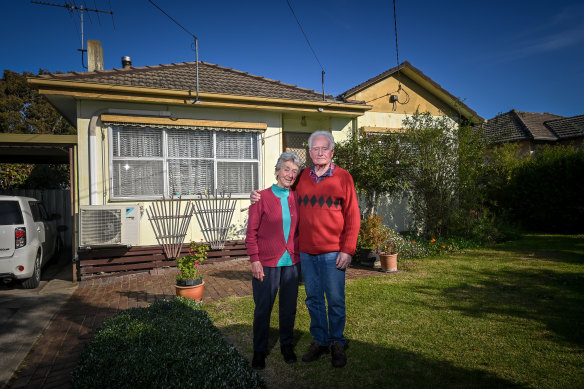
Sonja and John Rutherford outside their Broadmeadows home, where they have lived since 1964.Credit: Justin McManus
John and Sonja Rutherford remember the old Broadmeadows.
The one where few families owned cars and those who did got bogged on its dirt roads. The “Broady” of the 1960s, where workers left a neat line of gumboots on the train station platform and travelled to town in clean shoes.
Back then, loitering gangs of “Broady Boys” were the least of their worries.
“When people came here, they all got dogs, and we’d have packs of dogs going all around – we had more trouble from the dogs than the gangs,” Sonja recalls.
Broadmeadows was already a diverse mix of post-World War II European migrants when John, a plumber, and Sonja, a school teacher, bought their ex-Ministry of Housing cement workers’ cottage in 1964.
The couple, now both 86, have witnessed six decades of constant change as waves of migrants from every corner of the world were drawn to readily available housing and work.
A local manufacturing industry grew from migrant labour, then gradually died. Ericsson, Hard Yakka and the Kraft biscuit factory shut down in the early 2000s. The Ford Broadmeadows Assembly Plant followed in 2016.
A ‘hard’ suburb with community spirit
Amid all that change, some things have remained constant. One is the way Broadmeadows is “demonised” by other Melburnians.
“If you went for a job and had a Broadmeadows address, you wouldn’t get an interview. That was often the case, so people would put down addresses of their families [in other areas],” Sonja says.
John says it’s true the area has had its difficulties. “But overall people here are good people, they’re caring – warts and all – and they’re proud of what they’ve done,” he says.
All Melburnians know (or think they know) Broadmeadows, even though some have never ventured into the northern suburb, 15 kilometres from the CBD and five kilometres east of Melbourne Airport.
Eddie McGuire, arguably Broadmeadows’ most famous son, recalls it as a place that could be “pretty brutal” and violent when he grew up there in the ’60s and ’70s.
“But there was great camaraderie and people looked after each other, there was a great sense of community,” he says. “You had people who were down on their luck, but then you had families who travelled from the other side of the world burning with ambition.”
While its reputation may be based on outdated stereotypes, it remains the most economically disadvantaged area in Melbourne, with average family incomes close to half the state average and unemployment three times higher.
‘Broadmeadows is the land of opportunities.’
Nail Aykan, resident
Many locals, however, also describe it as a land of opportunity: the first stop on a journey towards security and prosperity.
And it will continue to change. Plans are under way to make Broadmeadows one of the fastest-growing population centres in Victoria, capable of absorbing thousands of new homes and residents.
The question troubling locals is whether Broadmeadows can escape the mistakes of its past, when the absence of essential services, infrastructure and opportunities set too many of them up to fail.
Broadmeadows’ colonial history dates back to the 1840s, when British settlers displaced the Gunung Willam Balluk clan of the Wurundjeri people from the area and started farming there.
A settlement was established in what is today Westmeadows around 1850, but the town centre shifted two kilometres west to its current location when a train line opened in the 1870s.
The City of Broadmeadows encompassed the surrounding areas from 1857 until 1994 when it became the City of Hume. That’s why locals from neighbouring suburbs like Dallas, Jacana, Coolaroo and Meadow Heights still say they’re from Broadmeadows; even Ford’s Broadmeadows assembly plant was actually in Campbellfield.
Broadmeadows first earned its place in the public consciousness when World War I broke out and thousands of military recruits trained at the Broadmeadows Military Camp (now the Maygar Army Barracks).
Migrant success
The Victorian Housing Commission embarked on an ambitious plan in the late 1940s to build a 2226-hectare estate of cement and fibro cottages, many of which still stand.
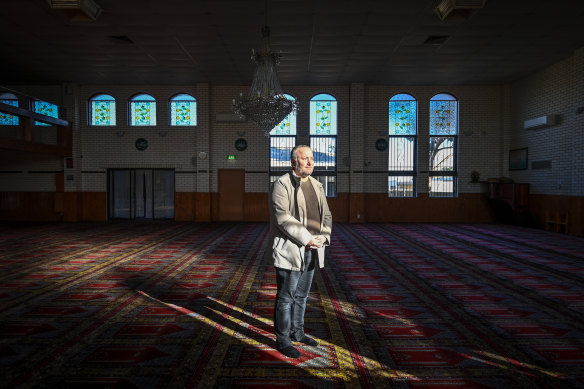
Nail Aykan says Broadmeadows has been a “land of opportunities” for wave after wave of migrants. Credit: Justin McManus
Nail Aykan says the story of Broadmeadows is one of migration. He was seven when he arrived in 1975 as part of a wave of Turkish arrivals and has lived there ever since.
Both his parents found work at the Ford factory and just two years later bought a house – something they never could have imagined had they stayed in rural Turkey.
“We came with two suitcases for two years, with the intention of returning back home, and 90 per cent ended up remaining in Australia. Which is a great story – it’s a happy story. I’ve got grandchildren now, so we’re into the fourth generation,” he says.
“Manufacturing enabled the successful settlements for the Turkish people.”
Aykan graduated from the rough-and-tumble Broadmeadows Technical School and went on to study science and statistics at university, eventually working in market research. Today he works in the not-for-profit sector, and until recently was chief executive of the uber-hip Collingwood Yards arts precinct. But family and cultural ties have kept him in the area.
Aykan remembers being a teenager and standing in the foundations of the Broadmeadows Mosque, which the community built following a huge fundraising drive before it opened in 1983.
It served as a beacon for subsequent waves of Turkish and other Muslim migrants to the area.
Today, worshippers of Middle Eastern, Asian and African backgrounds kneel to pray on its plush red carpet, donated by the late local businessman John Ilhan, whose Crazy John’s mobile phone empire made him one of Australia’s richest men.
Forty per cent of residents across Broadmeadows, Dallas and Jacana identified as Muslim in the 2021 census. More than two-thirds of households speak a language other than English at home, with the largest cohorts being Arabic (17 per cent), Turkish (12 per cent), Urdu (5 per cent) and Nepali (4 per cent).
In the past decade, refugees have arrived from Bhutan, as well as Christians fleeing conflict in the Middle East. Close to 4 per cent of residents speak the Assyrian Neo-Aramaic language.
“It’s just the wave after wave, after wave of different ethnic migrants who have chosen Broadmeadows as their new home,” says Aykan.
“Broadmeadows is the land of opportunities. A lot of them would have chosen it as a first step … but I would say that the beauty is that most of them actually decided to stay.”
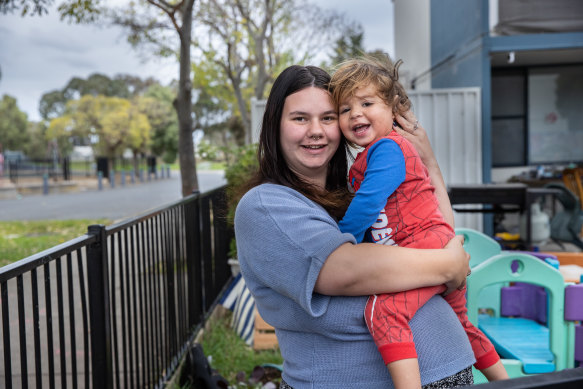
Nateisha Russell, with son Wayne, 2, says the quality of housing, not the people, is Banksia Gardens’ biggest problem.Credit: Simon Schluter
High unemployment
But the decline of local manufacturing has made opportunities harder to find.
Unemployment across Broadmeadows, Dallas, Campbellfield and Coolaroo has fallen from about 23 per cent in early 2017, just after Ford closed, to 15 per cent today. But that’s still triple the statewide average of 5.1 per cent.
The 3047 postcode, which covers Broadmeadows, Campbellfield and Coolaroo, was the most disadvantaged area across greater Melbourne in 2021, according to the Australian Bureau of Statistics, based on levels of income, unemployment and education. The 3048 postcode next door – taking in Meadow Heights and Coolaroo – was the second most disadvantaged.
For half a century, the Banksia Gardens public housing estate has been the symbol of Broadmeadows’ hardship.
It was built in 1975 with rows of townhouses and units facing onto an internal cul-de-sac, following the Radburn design concept, which has since been blamed for creating isolated ghettos with high rates of crime in public housing estates around the world.
Nateisha Russell has lived in Broadmeadows for the past eight years and moved into Banksia Gardens with her partner and two children 18 months ago.
“Everyone thinks this is a bad place, but I think there needs to be more attention on the good that is here,” says Russell, 21.
“It feels a lot like a community. Everyone knows each other and everyone looks out for each other. It’s not perfect, but honestly, nowhere is.”
Russell works at a local community centre and runs a weekly food bank from an old shipping container in the middle of the estate.
Residents have banded together to paint murals on the estate’s walls, and last year held a carnival for local children on their central street, knowing they could not afford to go to the Melbourne Royal Show.
The biggest problem people have on the estate, she says, is the decrepit condition of the houses. They are riddled with black mould, crumbling fixtures, and without proper heating or air-conditioning.
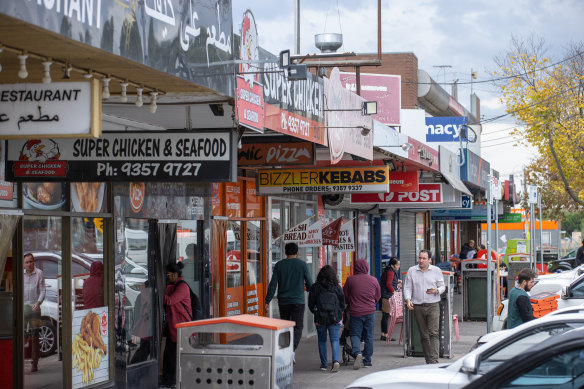
Across from the old Ford factory, the Fordgate shopping strip is bustling with Turkish businesses. Credit: Simon Schluter
Today about 400 people live in the 144 two-and-three bedroom townhouses.
Banksia Gardens Community Services chief executive Gina Dougall says the estate is in desperate need of redevelopment to make the homes liveable.
Instead, the state government has announced it will build 120 additional social housing apartments next door, which could more than double the number of people living on the estate.
Dougall says her charity is already stretched providing after-school care, programs to tackle violence against women and adult education courses to 80,000 people a year.
“We already have 350 kids registered for our after-school program. So what does that mean? If we’re going to have a doubling of population, we need to see this [community centre] redeveloped as well, so it can manage the huge numbers of people who use it.”
Dougall has worked at the centre for 25 years. In that time, once-comparable suburbs like Sunshine and Werribee have tackled entrenched social issues and started to gentrify. But she sees the same problems in Broadmeadows year after year.
“We’re the unhealthiest population in Victoria, we’ve got low rates of university completion, high school completion. Youth unemployment, health, education – it hasn’t shifted that much. And that’s because of structural disadvantage,” she says.
“Governments can make decisions to pull people out of poverty if they wanted to. We can make those choices, and we choose not to.”
The big issue on her mind today is the number of young people in the area who are disengaged from education, often as the result of trauma caused by family violence.
The centre works with 16 local primary and high schools to help these students re-engage, but it has been an uphill battle since the COVID-19 pandemic.
“Those kids are still falling through the cracks – they’re just not able to get the kids back to school,” Dougall says.
Hopes for a new industrial future
Long shaped by waves of migration, Broadmeadows is preparing for another influx.
Last year the Victorian government’s housing statement identified it as one of 10 “activity centres” around Melbourne that will absorb 60,000 new homes to help ease the housing crisis.
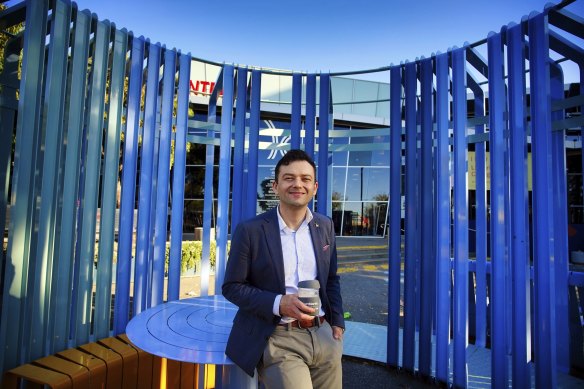
Hume Mayor Naim Kurt says Broadmeadows should welcome more residents, but investment in services and infrastructure must flow too. Credit: Luis Enrique Ascui
Rough plans suggest high-rise buildings will go up near the Broadmeadows Town Hall and shopping centre.
Townhouses and multi-storey apartments will replace the mix of fibro cottages and brick homes on quarter-acre blocks in the residential area east of the train station.
City of Hume Mayor Naim Kurt says the council welcomes the opportunity for Broadmeadows to do what it has always done: provide housing for those who need it.
“[But] we need to make sure that the services that are needed match the housing. We haven’t always gotten that right,” he says.
Broadmeadows’ biggest problem, he says, is its decrepit train station. It is one of the worst stations for crime in the city, it is inaccessible for people with disabilities and locals avoid using the long dim underpass that connects homes on the east side of the tracks to the business and services centre on the west.
An $80 million rebuild promised by the Brumby government in 2009 evaporated when Labor lost power in 2010.
The Andrews government gave it a $4 million facelift in 2016, but Kurt says the council has been told a full redevelopment won’t happen until Broadmeadows is connected to the proposed second stage of the Suburban Rail Loop project. That’s not flagged to happen until 2053.
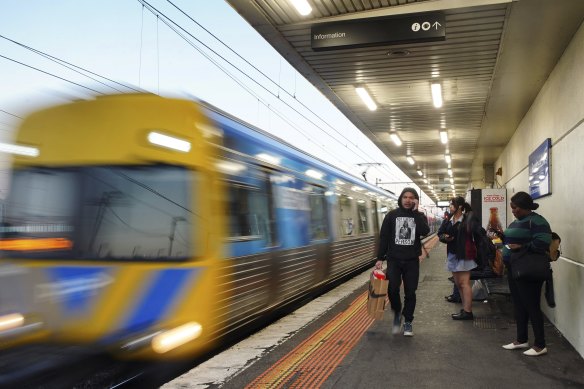
Locals say the run-down Broadmeadows train station is holding the area back. Credit: Luis Enrique Ascui
“We can’t wait 30 years for the SRL to be the catalyst to redevelop the train station – we need something there now,” he says.
The 1964 town hall had an award-winning makeover in 2019 and now hosts a co-working space for small businesses and start-ups, as well as an NDIS office that has brought close to 300 white-collar jobs to the area.
Hume Council now wants government investment to turn the car park between the hall and library into a bustling town centre surrounded by businesses and services.
Kurt says this is the missing piece that could revitalise the area, with a “beating heart of Broadmeadows, so we have jobs and services which are close to the housing”.
The shift towards denser housing is already under way at the old Hard Yakka factory in Dallas, where 51 trendy and compact townhouses are being built.
It’s the area’s first development of its kind, with 9000 bricks salvaged from the old factory and used to construct the townhouses’ facades.
There are hopes a new industrial future will soon rise from the rubble of Broadmeadows’ manufacturing past, too.
Property groups Pelligra bought the old Ford site in 2019, bulldozed it and is preparing the ground to build a new logistics and advanced manufacturing hub.
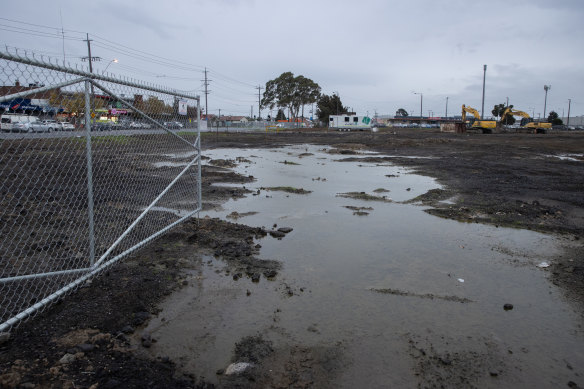
Developers say they hope to turn the old Ford site into a new advanced manufacturing hub. Credit: Simon Schluter
Pelligra chairman Ross Pelligra says the partnership is pouring close to $1.4 billion into the site and hopes to attract tenants working in electric vehicles, robotics and renewable energy when the first buildings open in about two years.
“Ford came and identified Broadmeadows as an opportunity because of the workforce, it was a great place to go and set up a big car manufacturing facility,” he says. “And that’s what we’ve identified today. I want to keep that alive.”
Elsewhere, biotech giant CSL opened a $900 million Plasma Fractionation Facility plant in 2022, and Kangan Institute is building a new healthcare training college in central Broadmeadows, which will offer courses in aged, disability and mental health care when it opens at the end of this year.
Eddie McGuire’s brother, Frank, who pushed for industry investment while serving as the member for Broadmeadows in state parliament from 2011 to 2022, says future prosperity lies in turning the area “from a rust belt to a green belt and a brain belt”.
John Rutherford notes something else that has remained constant through his six decades as a Broadmeadows resident and community activist: people here have always had to fight for what they need.
They organised working bees to build footpaths in the 1960s, campaigned for health and childcare centres in the 70s, battled to save the town hall from being turned into a pokies den in the 1990s, and won their first-ever library in 2003.
Rutherford wonders if the next chapter in Broadmeadows’ history will repeat this story or learn from it.
“Rather than just dumping people out here, you could have public transport, you could have a suitable shopping centre, you should have the schools, you should have the childcare and kindergartens,” he says.
“I don’t believe in the concept of history repeating itself. And yet here we are … none of those lessons have been learnt.”
Get the day’s breaking news, entertainment ideas and a long read to enjoy. Sign up to receive our Evening Edition newsletter here.
correction
An earlier version of this story said that property groups Pelligra and Qualitas bought Ford’s Broadmeadows Assembly Plant in 2019 and were redeveloping the site. In fact, Qualitas exited the partnership in September 2023 and is no longer involved in the project. It was also corrected to say Broadmeadows is east of Melbourne Airport.